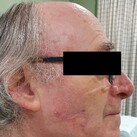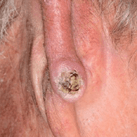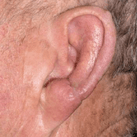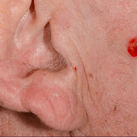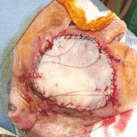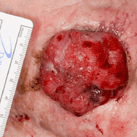Head & Neck Skin Cancer
Basal Cell Carcinoma (BCC)
This is the most common type of skin cancer worldwide, accounting for about 80% of all skin cancers, and is particularly common in New Zealand and Australia. It typically develops in areas of the skin that have been exposed to the sun over many years, such as the head (scalp), face (especially around the nose and eyes), ears, neck, and upper torso (and other sun-exposed areas).
It is characterised by slow-growing lesions that are flat, flesh-colored or brown scar-like, that often appear as raised, pearly or waxy bumps or sores that do not heal. In some cases, the lesion may bleed easily or develop a crust or sore that does not heal. The tumor may grow slowly and steadily, sometimes becoming quite large if left untreated.
Primarily caused by prolonged sun exposure or frequent sunburns over time, BCCs typically develop from abnormal basal cells in the skin's lowest layer. These cancers manifest as various types: Nodular BCCs feature rolled edges and visible blood vessels; Superficial BCCs appear flat and reddish; Morpheic BCCs are less defined and resemble scars, often recurring after treatment.
Typically, slow-growing and localised, BCCs rarely metastasise to other parts of the body but can cause significant local tissue damage if left untreated.
